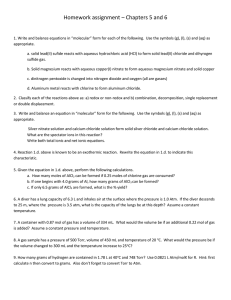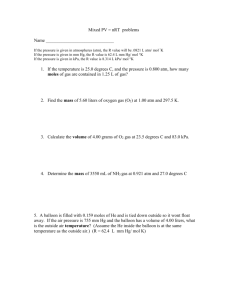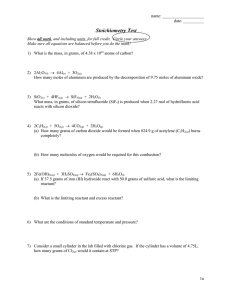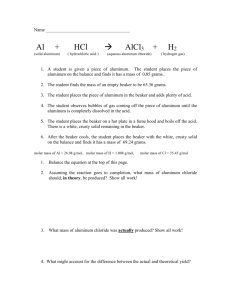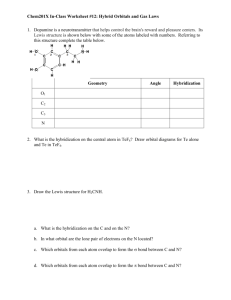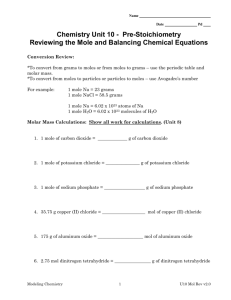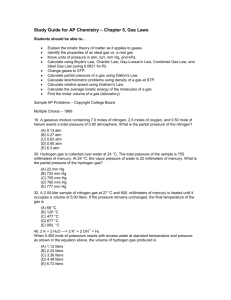Chemistry-II: practice problems for mid-year exam - cat-chem
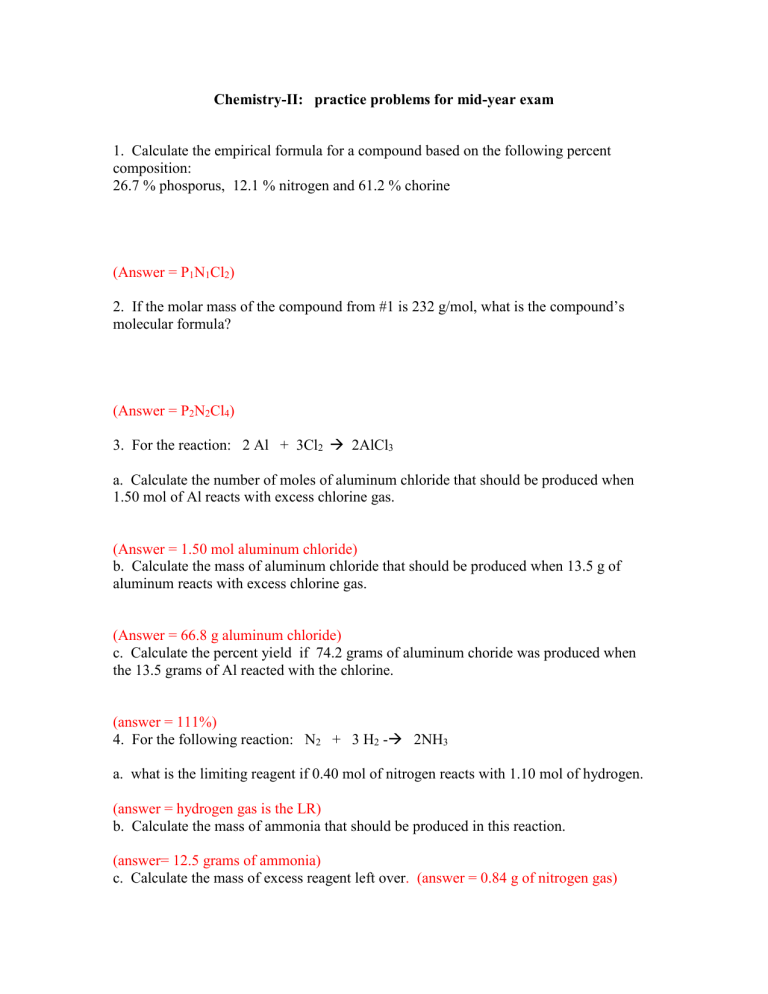
Chemistry-II: practice problems for mid-year exam
1. Calculate the empirical formula for a compound based on the following percent composition:
26.7 % phosporus, 12.1 % nitrogen and 61.2 % chorine
(Answer = P
1
N
1
Cl
2
)
2. If the molar mass of the compound from #1 is 232 g/mol, what is the compound’s molecular formula?
(Answer = P
2
N
2
Cl
4
)
3. For the reaction: 2 Al + 3Cl
2
2AlCl
3 a. Calculate the number of moles of aluminum chloride that should be produced when
1.50 mol of Al reacts with excess chlorine gas.
(Answer = 1.50 mol aluminum chloride) b. Calculate the mass of aluminum chloride that should be produced when 13.5 g of aluminum reacts with excess chlorine gas.
(Answer = 66.8 g aluminum chloride) c. Calculate the percent yield if 74.2 grams of aluminum choride was produced when the 13.5 grams of Al reacted with the chlorine.
(answer = 111%)
4. For the following reaction: N
2
+ 3 H
2
-
2NH
3 a. what is the limiting reagent if 0.40 mol of nitrogen reacts with 1.10 mol of hydrogen.
(answer = hydrogen gas is the LR) b. Calculate the mass of ammonia that should be produced in this reaction.
(answer= 12.5 grams of ammonia) c. Calculate the mass of excess reagent left over . (answer = 0.84 g of nitrogen gas)
5. A helium balloon with a volume of 2.0 liters is cooled from 20 degrees C to -5 degrees C. What is the balloon’s volume after being cooled? (pressure is constant)
(Answer = 1.8 L of helium gas)
6. Calculate the final volume of a gas in a balloon which has an initial volume of 10 liters at 1 atm when its pressure is decreased to 0.2 atm. (temp is constant)
(Answer = 50 Liters)
7. Calculate the pressure in atm for a 10 liter tank of gas which contains 220 grams of carbon dioxide gas at 100 degrees C.
(Answer = 15.3 atm)
8. Calculate the mass of carbon dioxide gas in a steel tank with a volume of 20 liters at a temperature of 80 degrees C and a pressure of 14 atm.
(Answer = 425 g of carbon dioxide gas)
